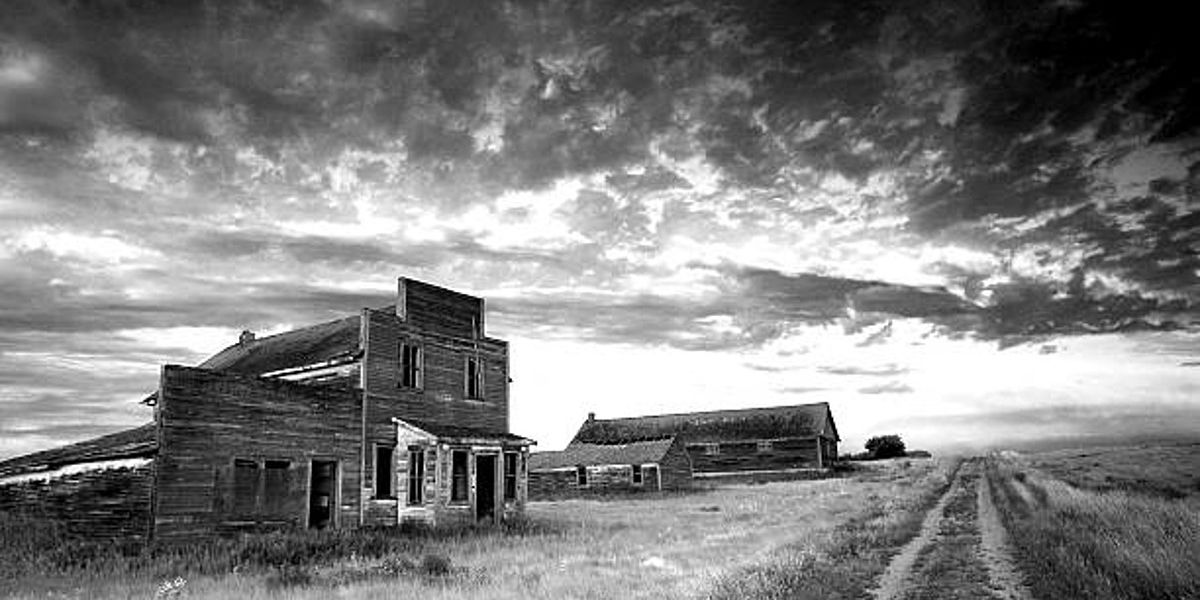Exploring the Secrets of Massachusetts’ Forgotten GHOST Towns
Massachusetts, known for its rich history and vibrant cities, has a secret that few people are aware of an abandoned town concealed from public view. A ghost town nestled among the state’s magnificent landscapes has been forgotten by time and is mainly unknown to its inhabitants.
This creepy yet interesting relic provides a peek into the past, enabling those who come across it to envision the lives that once existed within its disintegrating structures. Join us as we go through the intriguing abandoned town of Massachusetts, exploring the stories and secrets that have been left behind.
Dogtown: A Lost Community in the Woods
Dogtown, a village established in 1693 between the thriving communities of Gloucester and Rockport, is located deep within Essex County’s lush forests. For almost two centuries, Dogtown thrived as a granite quarrying village. Its hardy and independent inhabitants forged their existence from the rough terrain, quarrying rich stone that influenced the design of adjacent towns.
However, by the late 1800s, the Dogtown quarry was starting to diminish. With the demise of their principal resource, the locals began to pack their belongings and seek opportunities elsewhere. By 1893, Dogtown was eerily peaceful, its granite buildings abandoned, broken only by the rustling of leaves and the hooting of owls.
Dogtown now attracts brave people with a desire to explore. The journey to the town demands guts because the trail is overgrown and difficult to see. However, those who take the risk will be rewarded handsomely. Crumbling stone foundations, relics of the once-thriving village, emerge from the deep greenery. Nature has recovered its control, with towering trees casting long shadows over the abandoned hamlet. Dogtown is a monument to the impermanence of human activities, a reminder that even the most hardworking societies can fade away when resources run out.
Catamount: Where History Meets Hauntings
Travel further north, to the Berkshire foothills, and you’ll hear rumors of Catamount, a settlement nestled within the present-day town of Colrain. Catamount’s history predates Dogtown and dates back to the colonial era. This once-vibrant farming town thrived throughout the 18th century, with its citizens making their stamp on history in an unusual way.
According to folklore, Catamount Schoolhouse, established in 1812, was the first to fly the newly recognized American flag. While the exact events are unknown, the narrative lends an element of mystery to Catamount’s legend.
Unfortunately, Catamount’s prosperity did not last. The causes of its collapse are shrouded in mystery. Some believe that economic hardship or a change in farming practices may have had a role. Whatever the reason, by the mid-nineteenth century, Catamount had become a ghost town, with its population scattered to new beginnings.
Today, Catamount is a collection of basement holes and overgrown fields. While the physical structures have mainly deteriorated over time, the community spirit lives on. For history buffs and paranormal aficionados alike, Catamount provides a window into the past, allowing them to interact with the lives that once thrived here.
Whitewash Village: A Lost Jewel in the Harbor
Our final stop is on the salty shores of Cape Cod, where the whispers of a forgotten town mix with the cries of seagulls and the rhythmic roar of the ocean. Whitewash Village, founded circa 1710, was a thriving fishing settlement located in the bay outside of Provincetown. Its citizens were competent fishermen who contributed significantly to the town’s economy.
Unlike Dogtown and Catamount, Whitewash Village’s decline was not a gradual one. Around 1860, a tragic turn of events shook the village. A strong storm destroyed the harbor, shifting the dunes and effectively isolating Whitewash Village from the mainland. With their homes demolished and access cut off, the people had no choice but to leave their beloved hamlet.
The mournful silhouette of the Monomoy Point Lighthouse, which stands sentinel in the middle of the bay, is a heartbreaking reminder of Whitewash Village. Built-in the mid-1800s, it provided guidance to sailors crossing the dangerous waterways long after the hamlet itself had perished. Today, the lighthouse stands as a lonely protector, a quiet witness to a community devoured by the merciless sea.
A Legacy That Endures
These three abandoned communities, Dogtown, Catamount, and Whitewash Village, reflect a piece of Massachusetts’ forgotten history. They each tell a unique story of struggle, resilience, and, eventually, abandonment, providing insight into the forces that have molded the state’s history. They serve as a warning that change is unavoidable, and even the most opulent towns can go, leaving only whispers.
Exploring these ghost towns is more than simply a historical experience; it also provides an opportunity to ponder on the delicate balance between human progress and the natural environment. Dogtown’s story emphasizes the value of proper resource management. Catamount exemplifies the perseverance of the human spirit in the face of adversity. Whitewash Village stands as a striking reminder of nature’s strength and ability to transform the landscape in an instant.
Future of the Forgotten
The destiny of these abandoned communities is in the balance. Will they remain veiled in mystery, eventually succumbing to the relentless march of time? Will attempts be made to preserve their stories and remnants for future generations?
There are continuing conversations in Dogtown about constructing historical markers or guided tours that will allow visitors to understand the town’s unique history while not harming the fragile ecosystem. Catamount’s historical value could be protected by archeological excavations or the establishment of a heritage park. Whitewash Village, due to its position, may be better left alone, a silent testament to the might of the water.
Final Words
The destiny of Massachusetts’ ghost towns—Dogtown, Catamount, and Whitewash Village—is in the balance. These historical artifacts teach heartbreaking lessons about resilience, nature, and the effects of time. Whether restored or left to nature’s embrace, these abandoned settlements offer as eerie reminders of history’s fleeting nature and the eternal spirit of individuals who once lived there.











